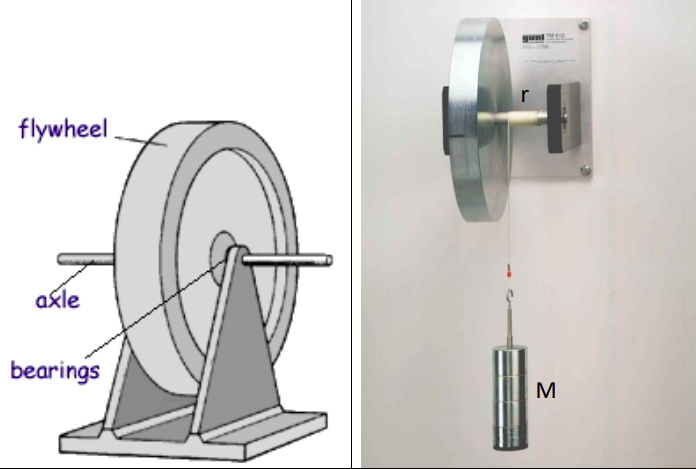- English
- বাংলা
−Table of Contents
This is an old revision of the document!
3. Moment of inertia of a flywheel
1. Introduction and theory
2. Method and data

Number of rotations before the mass falls,
Radius of the axle, cm; where is the main scale reading, is the Vernier scale reading, and is the Vernier constant.
| Mass (g) | ||
|---|---|---|
| 1000 | ||
| 1500 | ||
| 2000 | ||
| 2500 |
3. Angular velocity
4. Moment of inertia
Mean
Standard deviation
5. Discussion and conclusion
- Why does the flywheel come to a stop?
- Why are the 4 measurements of moment of inertia different?
- When does the flywheel reach its maximum velocity?
- What does the standard deviation (numpy.std) of tell you?
courses/phy101l/3.1698550140.txt.gz · Last modified: 2023/10/28 21:29 by asad
